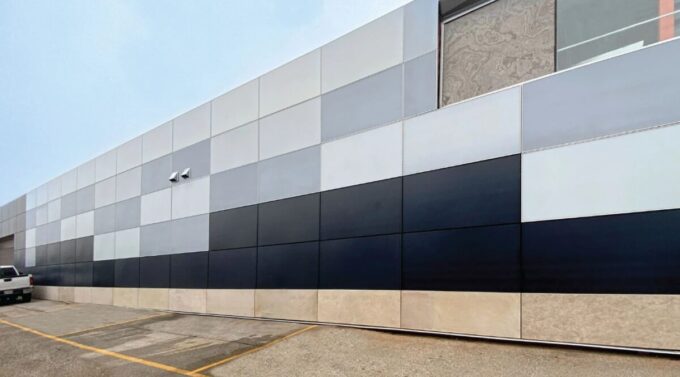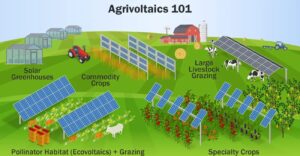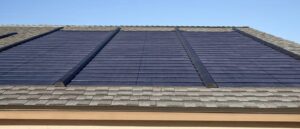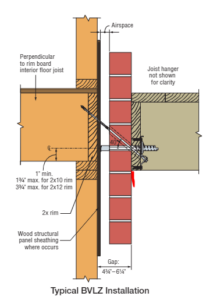The Science Behind Building Integrated Solar Technology
Building integrated solar technology (BIPV) is revolutionizing how we harness solar energy. By integrating solar panels directly into the building materials, BIPV combines aesthetics with functionality. This approach offers a seamless way to generate renewable energy while maintaining the building’s design integrity.

Types of Building Integrated Solar Technology
There are several types of BIPV systems, each designed for different applications and aesthetics:
- Solar Roof Tiles and Shingles: These panels replace conventional roofing materials, allowing the roof itself to generate electricity. Companies like Tesla and CertainTeed offer solar roof tiles that blend with traditional roofing, maintaining the building’s appearance while generating power.
- Solar Facades and Cladding: These systems integrate solar panels into the building’s exterior walls. Manufacturers like AGC Solar and Schüco provide solar facades that are customized to match the building’s design, offering a dual function as both a structural element and a power generator.
- Solar Windows: Transparent or semi-transparent photovoltaic glass replaces traditional windows, allowing light to pass through while generating electricity. Companies such as Onyx Solar and Ubiquitous Energy specialize in this technology, making it possible to turn entire facades into power-generating surfaces.
- Solar Skylights and Canopies: Solar skylights and canopies allow daylight to enter while producing energy. This technology is ideal for commercial buildings with large atriums or public spaces, combining natural lighting with energy generation.
Installation Configurations
The installation of BIPV systems varies depending on the type and the intended application:
- Roof-Mounted Systems: Solar roof tiles and shingles are installed similarly to conventional roofing materials, however these systems require precise alignment and wiring. The installation process must ensure that the panels are both weatherproof and correctly oriented for maximum sunlight exposure.
- Facade-Mounted Systems: Solar facades require careful integration with the building’s exterior. The panels are often mounted on a structural framework attached to the building’s walls. This configuration must account for both structural support and optimal solar orientation.
- Window-Mounted Systems: Solar windows are installed in place of traditional glass, but require specialized framing and electrical connections. The installation must ensure that the wiring does not interfere with the window’s functionality while maintaining a seamless appearance.
- Canopy Systems: Solar canopies, often used in public spaces, are mounted on support structures above the area. The panels must be angled correctly to capture maximum sunlight, and the wiring must be carefully concealed within the structure.
Efficiency and Lifespan
The efficiency of BIPV systems varies depending on the type of technology used:
- Monocrystalline Silicon Panels: These panels, commonly used in BIPV, offer high efficiency, ranging from 15% to 22%. With proper maintenance, they often exceed a lifespan of 25 years.
- Polycrystalline Silicon Panels: Slightly less efficient, with rates between 13% and 18%, these panels are still popular due to their lower cost. Their lifespan is comparable to monocrystalline panels, typically around 25 years.
- Thin-Film Panels: Thin-film technology, such as amorphous silicon, is less efficient, usually between 10% and 12%. However, it is more flexible and lightweight, making it ideal for applications where traditional panels may not be suitable. The lifespan of thin-film panels is generally shorter, around 15-20 years.
The expected lifespan of BIPV systems depends on the materials used and the environmental conditions. Regular maintenance, such as cleaning and inspection, can extend the life of the panels and ensure optimal performance.
Wiring and Electrical Integration
Wiring a BIPV system to a building’s electrical system requires careful planning and expertise:
- Inverters: BIPV systems generate direct current (DC), which must be converted to alternating current (AC) for use in most buildings. Therefore, the system typically includes inverters near the main electrical panel.
- Electrical Load Considerations: The electrical engineer must design building’s the electrical system to handle the additional load from the solar panels. This may involve upgrading the electrical panel or installing additional safety devices, such as breakers or fuses.
- Connection to the Grid: Design Engineers typically connect BIPV systems to the local electrical grid, allowing excess energy to feed back into the system. This requires compliance with local regulations and the electric utility company, and may involve installing a bidirectional meter to track energy flow.
- Battery Storage: Some systems include battery storage to store excess energy for later use. The integration of batteries requires additional wiring and safety considerations, as well as careful planning to ensure that the storage system is compatible with the building’s electrical infrastructure.
Conclusion
Building integrated solar technology represents the future of sustainable building design. By incorporating solar panels directly into the building materials, BIPV offers a functional and aesthetic solution to energy generation. With various options available, including solar roof tiles, facades, windows, and canopies, there is a BIPV system to suit every architectural style. Understanding the science behind BIPV, including installation configurations, efficiency, and electrical integration, is crucial for maximizing the benefits of this innovative technology.
References
- Solar Panel Efficiency: National Renewable Energy Laboratory (NREL). (2021). Photovoltaic Research. Available at nrel.gov.
- BIPV System Installation: Solar Power World. (2019). Best Practices for Building Integrated Photovoltaics. Available at solarpowerworldonline.com.
- Electrical Integration of BIPV: U.S. Department of Energy. (2020). Guide to Photovoltaic (PV) System Design and Installation. Available at energy.gov.
- BIPV Manufacturers and Products: Solar Magazine. (2022). Top BIPV Manufacturers and Products for 2022. Available at solarmagazine.com.
- Lifespan and Maintenance: International Energy Agency (IEA). (2018). Photovoltaic Power Systems: Technology and Applications. Available at iea-pvps.org.










